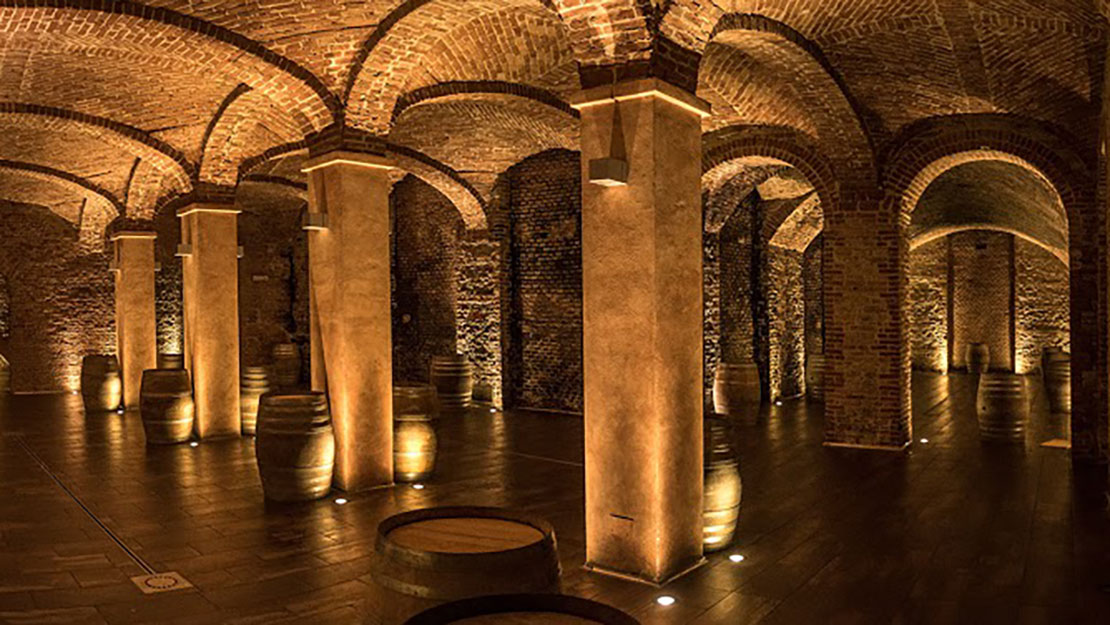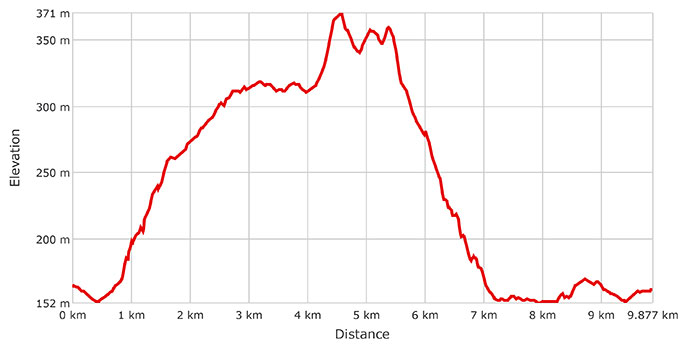
- Bike: trekking
- Difficulty: **
- Distance: 10 km
- Altitude difference: 219 m
- Total ascent: 270 m
- Total descent: 270 m

Canelli and Asti Spumante make up the fifth distinct winegrowing area listed as part of the UNESCO World Heritage Site of the Vineyard Landscapes of Piemonte, encompassing the districts of Langhe, Roero and Monferrato. The city marks the birthplace of Italy’s first spumante from Moscato grapes. In 1850, after a stay in France, Carlo Gancia, founder of the eponymous wine producer, began experimenting with a sparkling vinification process similar to that used for French champagne. The difference, however, lay in his choice of grape variety, a white wine grape of incomparable sweetness and aroma that grows throughout the south of Piemonte: “Moscato bianco di Canelli.” After lengthy trials in his Canelli wine cellars, in 1865 he was the first to patent the new wine, which would come to be known as Asti Spumante, among the first to obtain a DOCG classification in 1993. Today, Asti DOCG is the best known spumante on earth, selling over 80 million bottles worldwide.
Moscato di Canelli was a subarea for the production of Asti DOCG until 15 April 2019, when the Moscato di Canelli Producers Association obtained its own, independent DOCG classification for the wine Canelli DOCG or Moscato di Canelli. As of 2020, the wine will be sold with its own official, authorised label.
To promote the new wine, the Enoteca Regionale di Canelli e dell’Astesana and the Moscato di Canelli Producers Association organize, on the first Saturday of July, the wine festival “Notte Dolce a Canelli con i Colori del Vino”, a long night celebrating the “bubbles” of Moscati di Canelli, which since 2014 has attracted thousands of tourists.
The most original sight to see in Canelli is also its least visible. It is the so-called Underground Cathedrals – kilometres of tunnels and passageways dug directly into the hillside between the sixteenth and nineteenth centuries. In the silence of those spaces, which evoke the atmosphere of ancient cathedrals, under the protective cover of an age-old land, conditions provide the perfect temperature and constant humidity levels for refining fine wines and spumanti, which still today are left to age in those underground cellars, before reaching the glasses of wine lovers all around the world. It is in those wonderfully old and incredibly big cellars that the local wines are left to rest and develop all their characteristic qualities.
Canelli’s Underground Cathedrals belong to four major historic winemakers – Bosca, Contratto, Gancia and Coppo – each of which independently opens the doors to its treasures to the public, with different arrangements.
This cycling tour is for young and old alike. The starting point is from the parking lot of the train station, located at the end of Corso Libertà. A few metres down that same road, at number 66, is the Gancia Museum. In the historic cellars of the winemaker, the museum retraces the history of an important producer of wine and liqueurs since 1860. Exhibiting a range of objects, posters, knick-knacks, exclusive bottles and labels, the museum also houses a film archive of its advertisements, including commercials from the 1960s and 1970s shown on the popular television programme Carosello. Back on your bike, head towards the Borgo, the historic town centre, crossing the Belbo river and following the directions for Piazza Amedeo d’Aosta. Along the way you will pass Palazzo Scarazzini, the medieval palace and the old town hall. Further on, in Piazza Gioberti, stands Palazzo Cornaro, one of the most stunning baroque residences of the provincial nobility. Continuing along the road, you will then reach the twelfth-century Saint Thomas’ Church, worth a visit for its interesting furnishings and baroque-era paintings. There take the old cobble-stoned uphill path known as the Sternìa (literally “the path”), which will lead you first to Saint Roche and Saint Leonard’s Church, then to Casa Prato, built in 1580, the home of the former lords of Canelli, and then to the stately Gancia Castle, a private property that is not open to the public, but still amazing to see from the outside. Once past the castle, continue uphill across the Aie district until you reach the Church of Our Lady of the Snows, where breathtaking views await. That is not the end of the climb, however, as the road continues uphill to Saint Anthony the Abbot’s Church, where you turn left to head towards Saint Anthony’s hilltop. Keep climbing a few more metres, taking the dirt track, to reach the highpoint of the tour at 371 m, marked by Torre Contini, a view point from which to admire the panorama of Canelli. Moving on, cross the Bassano district, staying on the dirt track for a final climb up the Roma hilltop. From there it is a well-earned downhill ride for almost 2 km back to the city. Once in town, take via Alba down to number 68 to see the historic Coppo Cellars, then follow the route towards Via G.B. Giuliani, where at number 56 you will find the Contratto Cellars and at number 29 the Enoteca Regionale di Canelli, home to the tourist information office and the Musa Museum, a multimedia museum dedicated to the South Asti district. The Underground Cathedrals Tour then ends with a final visit to the Bosca Cellars at number 23 on that same road. Having completed your tour of the city, it is a short ride back to the starting point at the train station on Corso Libertà.
